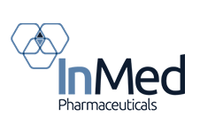Here’s a breakdown of what investors need to know about Phase 3 clinical trials and the FDA drug approval process.
Clinical trials are the backbones of drugs being approved and marketed in the health industry, with each study requiring different approvals before they can ever become commercially available.
The National Institutes of Health explains that clinical trials provide the basis on how to diagnose or treat a disease with targeted therapies. Patients who participate have the opportunity to receive a therapy for a condition they might not otherwise have access to. The most common clinical trials assess cancer patients.
As the US Food and Drug Administration (FDA) notes, when a new therapy is being developed and a clinical trial is about to take place, participants are provided with informed consent. This provides information that will help patients on making a decision on participating in the trial as well as an agreement on participation, to name a few.
In that regard, there are understandably risks tied to participating in a study, including the costs of involvement not being covered by health insurance, the potential treatment options not working as planned or experiencing negative side effects.
Of course, the different phases of clinical trials are not quick processes and can take several years before even getting to the third phase, which is when a company can request approval from the FDA to market the drug.
According to the FDA, there are five crucial stages in drug development, with Phase 3 perhaps being the biggest and most important in order to receive the seal approval from the regulatory agency.
Here, the Investing News Network breaks down details of the clinical trial process, why Phase 3 clinical trials are important and how to invest in companies in Phase 3 clinical development.
Clinical trials guide Phase 3: The clinical trial process
Before any potential treatment enters the clinic to be tested on animals or human patients, the FDA must first accept the Investigational New Drug (IND) application. These applications are a request to the FDA to see if the treatment option will be safe for administration in people, and the application moves it into preclinical research. This is when in vivo or in vitro testing is done, generally on a living organism such as animal cells.
In accordance with the FDA, the Institutional Review Board (IRB) is tasked with reviewing research associated with human subjects. As such, the IRB can either approve or reject research based off whether or not the research has the best interests of human subjects in mind.
After a company and its researchers have submitted an IND, the agency has 30 days to review the application. If the product is deemed safe for continued development, the developer gathers the necessary data to prove that the treatment will not be harmful or have any risks in use in early-stage clinical studies.
From there — and if the application is successful — these medical product candidates can then move into a Phase 1 clinical trial. Here, the safety of potential medical treatments is evaluated using a small group of participating patients. According to FDA protocol, between 20 and 100 patients that are in good health or who have the indicated disease enroll in the trial to be tested.
In addition to safety, the purpose of Phase 1 drug trials is for monitoring treatment dosage to determine how well a patient can tolerate the quantity of the drug being administered. The FDA estimates that 70 percent of drugs in Phase 1 move onto a Phase 2 trial.
Phase 2 trials continue to examine safety but the primary focus is on the efficacy of a drug, meaning it looks at the overall effectiveness of the intended treatment. These trials evaluate patients that are taking the drug compared to others who might be receiving a different treatment or a placebo. Hundreds of people with the indicated disease participate in a Phase 2 trial, which can take place over several months and up to two years.
A lot of the time Phase 2 trials are blinded, which means patients and researchers don’t know which group receives the placebo or the actual drug being evaluated to move onto a Phase 3. Unlike Phase 1 trials, roughly only 30 percent of treatments in a Phase 2 trial are successful and can enter the next stage.
Clinical trials guide Phase 3: What happens in a Phase 3 clinical trial?
Phase 3 trials are when things get really interesting in the approval process due to high costs and risks. However, they are simultaneously the most rewarding. The purpose of a Phase 3 trial is to show that it is effective and watch for any adverse events or negative reactions.
A group of anywhere between 300 and 3,000 patients with the treatment’s intended condition participate in the trial, which can last anywhere between one year and four years. The patient population participating in most Phase 3 trials is randomized controlled, which means patients are randomly put into a treatment group.
According to the US National Library of Medicine, most Phase 3 trials test the efficacy of a drug and compare it to an existing drug on the market or a placebo. Phase 3 trials can also be an equivalency trial, or a positive-control study, which determines whether the drug candidate is similar to the one it is being compared to and remains within the prespecified margin. In other words, candidates in these Phase 3 trials must show that they are at least on the same level as their competitors.
The FDA states that only 25 to 30 percent of drugs in this stage move onto the next phase, which is an FDA review of the drug. This is where companies can request from the regulatory agency official approval to market and sell the drug; this is called a new drug application (NDA).
When submitting the application to the FDA, companies must package up all the data they have acquired throughout the process. Approval requires everything collected from preclinical research all the way through to Phase 3. The NDA should also include substantial data from at least two controlled clinical trials.
During this process, companies must include things such as labelling, safety, information on drug abuse, patent information, how to take the drug, data from studies that were done outside of the US and any compliance information. The reviewing committee can then determine whether the package is complete or not and can reject NDAs if they don’t meet the agency’s standards. If the package is complete, the review process can take anywhere between six to 10 months to approve the drug.
Clinical trials guide Phase 3: Investing in Phase 3 clinical trials
For investors looking for investment opportunities in companies conducting Phase 3 clinical trials, there are a range of things to consider. Investing in Phase 3 clinical trials is the epitome of the classic saying, “high risk, high reward.”
The first thing to consider before investing in a company conducting a Phase 3 trial are potential outcomes. Outcomes of a Phase 3 trial more often than not have substantial effects on a company’s share price — for better or for worse — which then, in turn, impacts an investor’s returns.
If a trial doesn’t go as planned, the company’s stock price can plummet; but, if it is successful its share price is likely to increase dramatically. It is also important to remember that — as noted above — only 25 to 30 percent of drugs being tested in a Phase 3 trial get approved.
Should an investor decide to make an investment in a company in Phase 3, the company’s pipeline and other drug candidates are also things to consider. Established companies in the market are often safe bets for investment opportunities although their Phase 3 outcomes may or may not have a drastic impact on share price. Smaller companies may have more risks attached to a negative decision, but can also rake in more benefits than a large-cap company from a positive outcome.
Don’t forget to follow us @INN_LifeScience for real-time news updates!
Securities Disclosure: I, Jocelyn Aspa, hold no direct investment interest in any company mentioned in this article.



